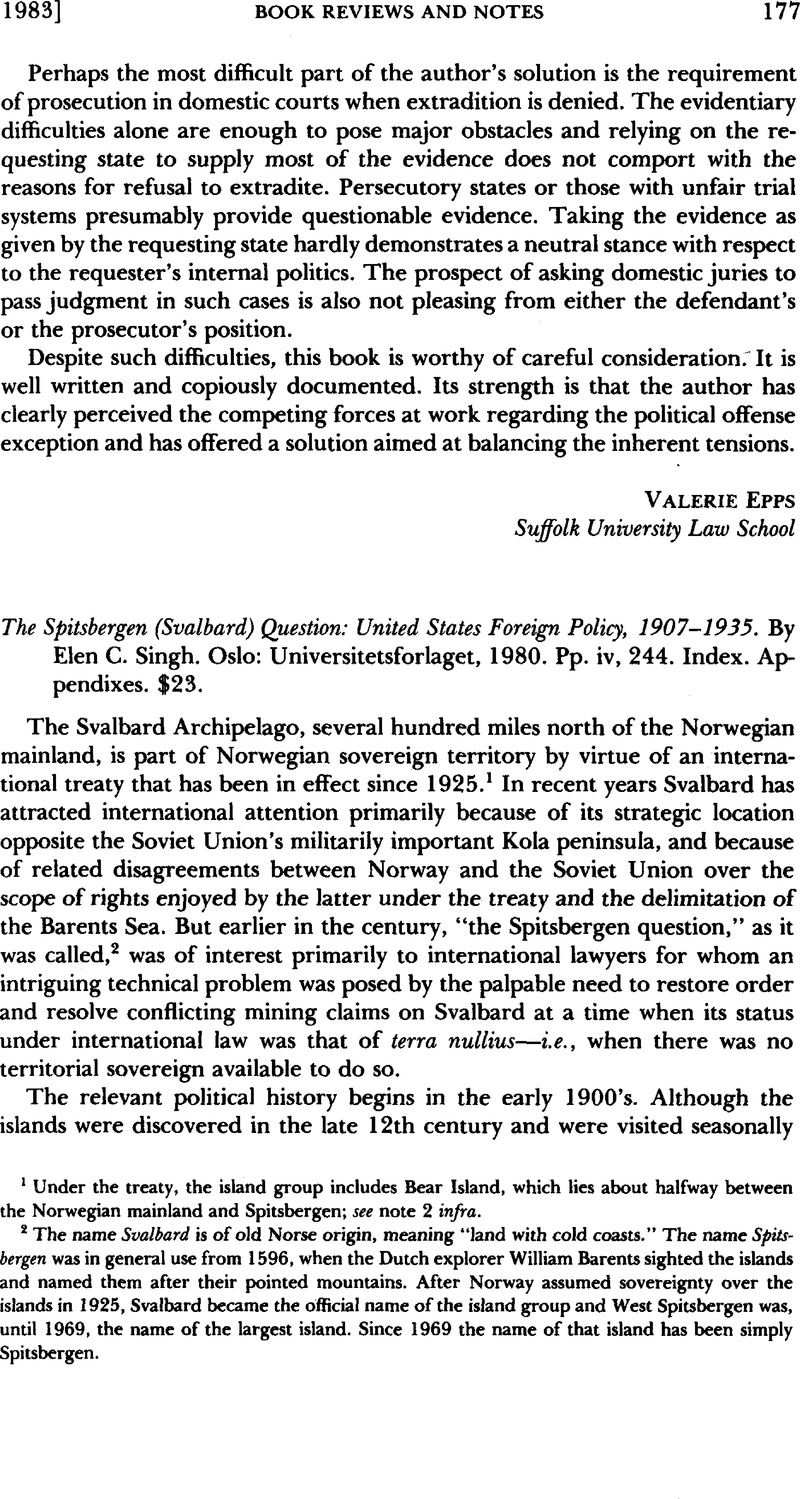No CrossRef data available.
Published online by Cambridge University Press: 27 February 2017

1 Under the treaty, the island group includes Bear Island, which lies about halfway between the Norwegian mainland and Spitsbergen; see note 2 infra.
2 The name Svalbard is of old Norse origin, meaning “land with cold coasts.” The name Spitsbergen was in general use from 1596, when the Dutch explorer William Barents sighted the islands and named them after their pointed mountains. After Norway assumed sovereignty over the islands in 1925, Svalbard became the official name of the island group and West Spitsbergen was, until 1969, the name of the largest island. Since 1969 the name of that island has been simply Spitsbergen.
3 See, e.g., Lansing, , A Unique International Problem, 11 AJIL 763 (1917)CrossRefGoogle Scholar; and Nielsen, , The Solution of the Spitsbergen Question, 14 id. at 232 (1920)Google Scholar.